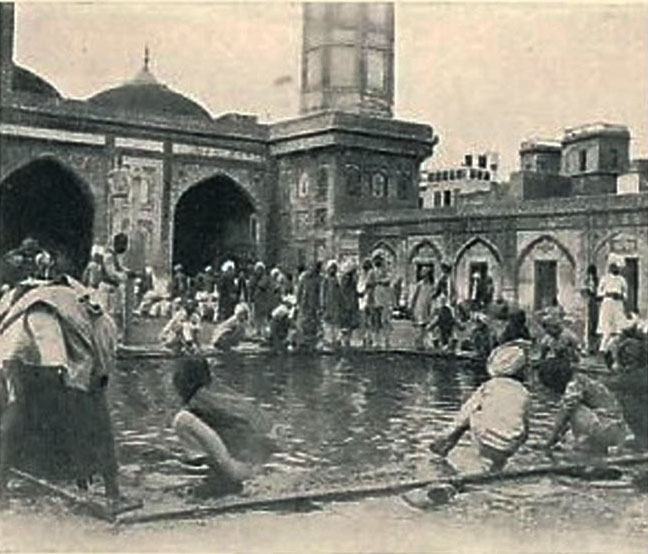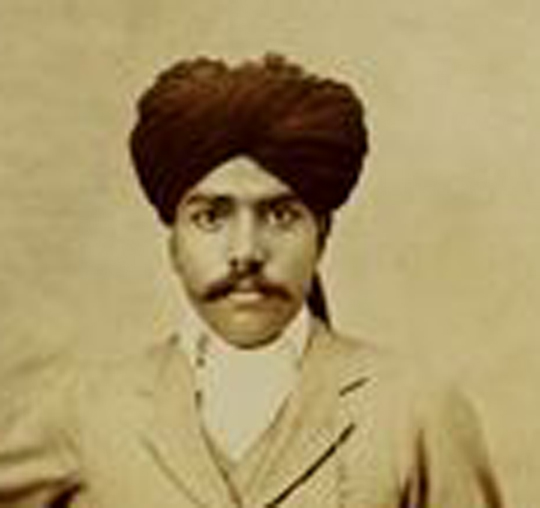THE FIRST PAINTING OF M.A. RAHMAN CHUGHTAI
NUR JAHAN MOURNING AT JAHANGEERS TOMB
A teenager’s fantasy and birth of Chughtai Art
Art activity was in full swing in Lahore. A Punjab Fine Art Society was established here and various exhibitions shows were being arranged at the Lahore Museum. A show of paintings was held and that was seen by M.A. Rahman Chughtai. Instinctively he felt that he could do better than the acknowledged Masters of Hindustan, which included the Bengal School, as well as the great Master, Abindaranath Tagore, the accepted giant of Indian Art. Indeed his assertion was simple, those people had no concept of Muslim Culture and depicted it wrongly all the time.
After his Eighth Class Certificate and education at Railway Technical School Lahore in 1911, the artist had joined Mayo School of Arts for diploma in Photo lithography. Samarendranath Gupta was too vain and arrogant to teach to a Muslim set of students. And there was personal dislike between the two persons at Mayo School of Arts. A three piece English suit Gupta was versus a Sherwani shalwar and turban phag of Master Abdur Rahman, as he was called at that time, and ethnic and religious bigotry was self evident.
It was the years of the photography of M.A. Rahman Chughtai. Armed with a wooden Box camera of his own and a set of glass plates, he was experimenting all the time. His portrait of the Director Education became very famous for its portrayal at that time. Also busy with stone work for his lithography, and printing same in one form or the other. Designing of Eid cards was there as well as aero work for some of his portraits of people. He used to colour the photographs himself, and there is a record of same to this day.







The idea of a painting with Nur Jahan mourning at Jahangeer’s tomb came to his mind. He first did something which he never did all his life. Asked his wife to pose in a praying posture, and photographed some poses of her. These photographs he kept on one side.
Next was to be a factual record of the tomb itself. The artist was a regular visitor to the Mausoleum of Emperor Jahangeer with other boys to frequent the place. There in early years M.A. Rahman Chughtai copied the sarcophagus of Jahangeer for his proposed painting. We attach here an image of that earliest drawing of the artist. Writings state the colour of the stones used for the purpose. Indeed a unique record in our archives.
Armed with both a photograph of his wife praying and a sketch of the sarcophagus, he completed a painting of the great Queen of the past mourning the loss of her husband. With big fanfare M.A. Rahman Chughtai exhibited the work at a neighbour’s house in Chabuk Sawaran and the family of the neighbour still remember the event. Everyone liked it and praised it. But the artist himself was unhappy with it for his own reasons. Finally he got tired of it and tore it himself. He was also sincere in tearing things that he did not like, much to the regret of family and friends. Children used sneak in his studio to steal torn paintings but he would not allow that. So a cousin of ours had a torn painting but he lost it in a ship wreck in the sea when coming back from England.
The first painting that got published in Modern Review in January 1916, can be compared to his first painting, that was created but could not remain. Other works on the same subject came afterwards but never that painting itself.


















